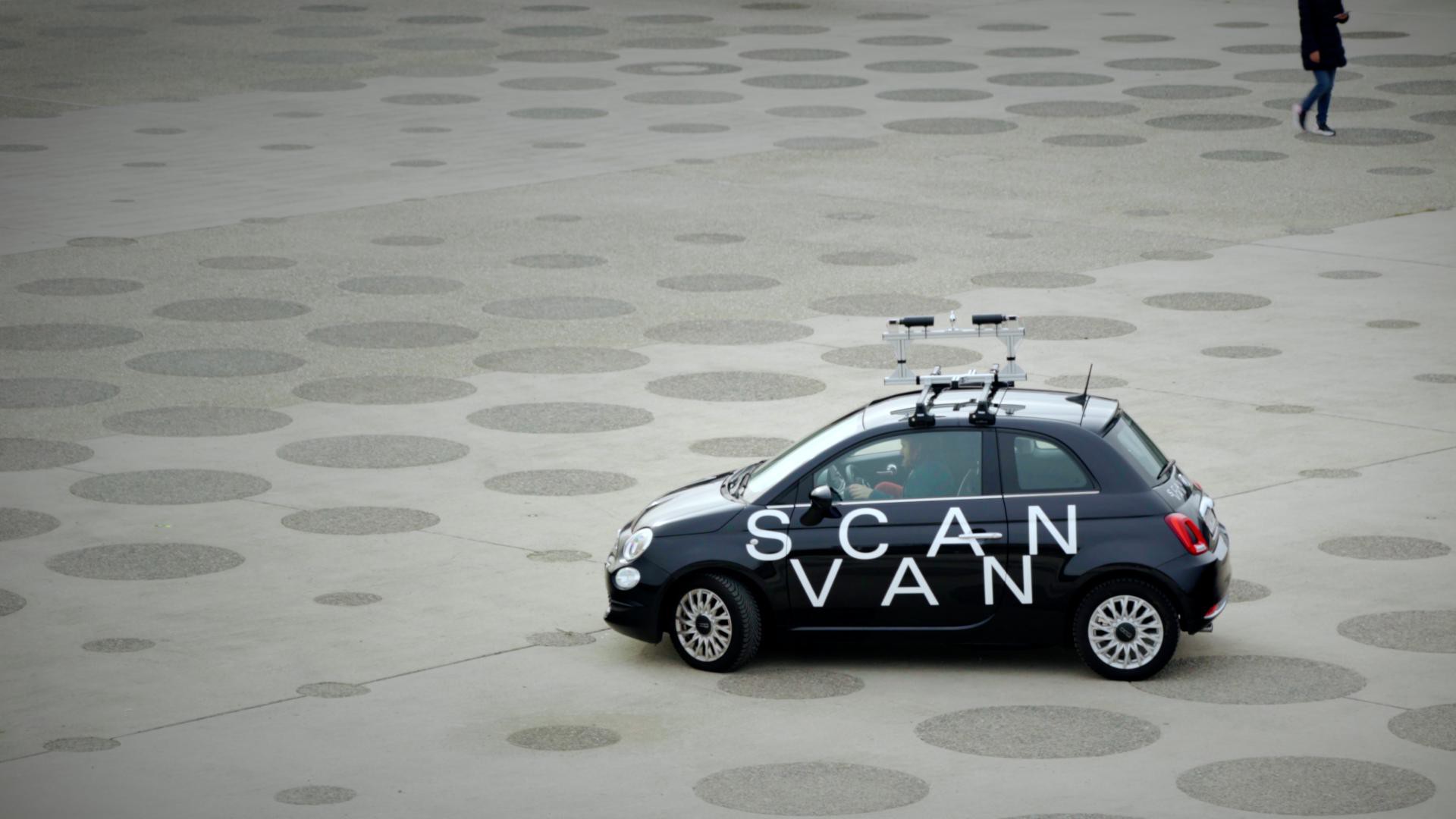
City digital twins: 3D models from a scanning car
Authors
ScanVan Team
EPFL and HES-SO
The NRP 75 project ScanVan aimed at demonstrating that Spherical Camera can greatly simplify the production of 3D photogrammetric datasets, allowing computing 3D models of cities on a daily basis.
Learn more about the project in the video
In the course of the project, the research teams designed an omnidirectional central camera, an algorithm for geometry estimation that operates directly on spherical images and a densification technique based on the estimated geometry.
The ScanVan camera was designed as a hyperbolic mirror. The shape of this mirror has been calculated in a way to reflect light rays from all directions to two high-resolution sensors. The camera was mounted on a vehicle and tested in the city of Sion.
Web interface to navigate also in time
To explore the flow of new data a web navigation interface has been developed which allows moving fluidly between different scales of 3D representations. When possible, it also includes the option to go back in time when older 3D models are available making it a 4D world. In order to make this world a public space that respects privacy a privacy-by-design approach was followed.
The multidisciplinary Swiss team consisted of researchers from the EPFL Digital Humanities Laboratory, the HES-SO Valais/Wallis Institute of Systems Engineering, and the University of Zurich’s Center for Information Technology, Society, and Law.
